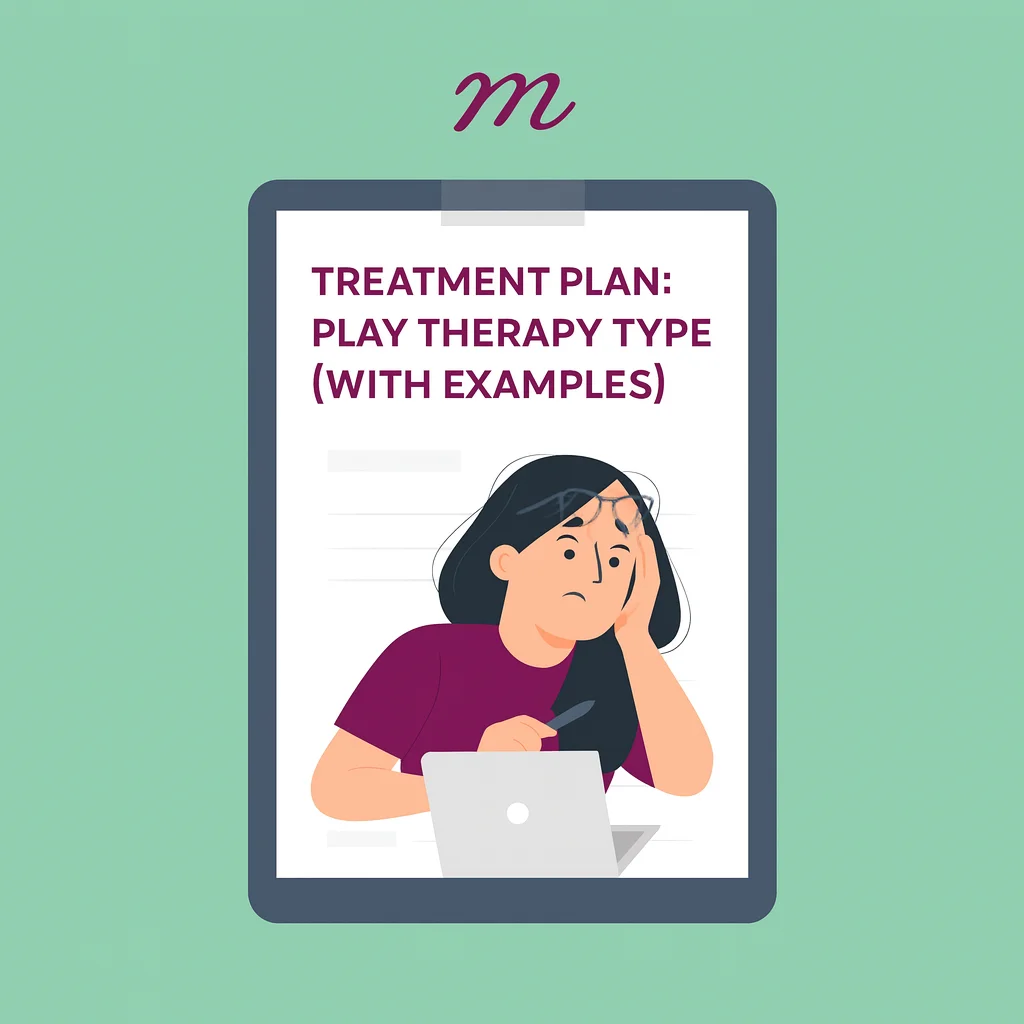Play Therapy Treatment Planning: A Practical Guide
The playroom is a place in a therapy centre where all the magic happens. It’s where a child who’s experienced trauma can safely recreate their world using different props where anxiety becomes manageable through puppet play, and where unspoken feelings find expression through art and movement based expressions. As play therapists, we are grateful to witness these powerful and transformative moments. The challenge lies in translating these profound experiences into structured treatment plans that both honour the therapeutic process and satisfy clinical requirements.
In any form of therapy, play has always been effective. As they say, it is not limited only to the children, the adults also tend to benefit from the somatic , play based approaches. Such as doing some clay work, it offers creative ways to express oneself and it aids in the healing process. Many adults encounter difficulties in standard talk therapies and in such cases, therapists encourage them to play with clay to articulate emotions that are too elusive to be verbalized. The repetitive nature of playing with clay allows work at a more profound level as it bypasses intellectual defences that may take months to penetrate during the course of talk therapy.
Planning Sessions Using Play Materials
Every play therapy session requires thoughtful planning while maintaining room for spontaneity. Think of it as creating a therapeutic container that’s both structured and flexible. A session might begin with a brief check-in using feeling cards, move into free play where the client leads the way, and end with a transitional activity that helps bridge the therapeutic space back to everyday life. The key is maintaining a balance between following the client’s natural play instincts and gently guiding the process toward therapeutic goals.
Materials and Their Therapeutic Applications
The play therapy room is thoughtfully prepared to provide the opportunity for different kinds of therapeutic work. Here’s how different materials serve specific therapeutic purposes:
Sand Tray and Miniatures: The sand tray provides a contained world for clients to create, destroy, and recreate scenarios safely. The sensory input that is received by playing with the help the client with emotional regulation, and the miniature figures provide symbolic expression. A client often externally represents their internal world when they pick figures and arrange them in the sand.
Art Supplies: Paint, clay, markers, and collage supplies permit non-verbal communication. Clay work is a strong medium – it allows the client to literally work with their experiences and feelings to reshape them. Sometimes the resistance of the clay also grounds them and helps regulate the emotion.
Puppets and Dolls: These materials are great for role-play and practicing social situations. They offer emotional distance that helps clients safely explore difficult interactions or emotions. They work well when using social anxiety or family dynamics.
Therapeutic Games: Structured games can help develop turn-taking, frustration tolerance, and social skills while providing opportunities to practice real-time emotional regulation.
A Case Study
Let us consider the case of a 9-year-old girl Sarah who recently lost her grandmother –
Sarah’s story after her grandmother’s death. This death had left a profound silence in her young life. She had been silent on her first day at the play therapy center. On regular days Sarah has a very lively personality, but that day she had been a silent child due to her grandmother’s death. Her parents were worried about the kind of impact grief was having on Sarah.
- The First Session
In her first session, Sarah carefully handled the sand tray. Her therapist, had thoughtfully prepared the area: it was a huge wooden tray of fine sand. Around her there were shelves lined with miniature figurines depicting people, animals, buildings, and natural elements.
In Sarah’s first session – She picked out a few figurines with care – an old lady figurine similar to her grandmother, a girl the same age as herself, and some family member representations. Initially, she placed them together, quite tight, then began gradually spacing them out.
- Creating A Map of Grief
Week after week, Sarah’s sand tray became a landscape of emotion. At one point, she arranged the figures so that the grandmother figure sat surrounded by flowers, off to one side of the rest. Dr. Rodriguez noted that Sarah would sometimes put sand over the grandmother figure, then dig her out again, which could be interpreted as an expression of memory, loss, and perhaps the idea of presence and absence.
- The Changing Story
Week One: Compact, clustered figures reflecting family bonding
Week Two: Figures begin to move apart from each other, indicating an emotional separate
Week Three: More intricate themes with paths interconnecting
- Beyond the Sandbox
The therapy went beyond sand play. A multiple creative approach was undertaken by Sarah in her journey of healing:
Memory Boxes: She made decorated boxes where she could “store” her memories of her grandmother. Each item placed in the box was chosen with care – a pressed flower, a drawing, a small trinket that reminded her of special moments.
Art Therapy: Through drawing, Sarah started illustrating memories. Her drawings changed from dark, monochromatic scenes to more colourful representations of joy and remembering.
Narrative Expression: The therapist encouraged her to speak of her grandmother in a narrative form, using puppets and dolls to facilitate speech of feelings that were too confusing for direct verbal expression.
- Breakthrough Moments
Sarah had a significant breakthrough moment in one session where she created a sand tray scene featuring her grandmother as a guardian figure who watched over the rest of the family from a distance. She verbalized feeling her grandmother’s presence as a continued experience of loss but as a way of being connected.
At six months post-play therapy, the following are the changes that have surfaced in Sarah:
- Improved emotional communication
- Can now talk of her grandmother without sadness taking over
- Enhanced regulation of emotions
- Acquired constructive ways of coping with pain
Sarah’s path exemplifies one of the essential realities of play therapy: it is not about eliminating grief, but rather about providing a safe and creative environment for processing. The sand tray became her language, the miniatures her words, and the therapeutic procedure her way of healing. Her tale reminds us that sorrow affects children on a deep level, and they require specialized, caring techniques to navigate these emotional landscapes.
- Treatment Panning
Sarah’s treatment plan was carefully planned to meet her emotional needs after the loss of her grandmother. Dr. Rodriguez started with an initial assessment that was very comprehensive, including:
- Intake Interview to understand –
- Family dynamics
- Sarah’s relationship with her grandmother
- Her initial reactions to the loss
- Any observable behavioral changes
- Initial Assessment Session –
- Observed Sarah’s play patterns
- Assessed her emotional regulation
- Established rapport through non-directive play
- Identified potential therapeutic goals
- Specific Intervention Techniques –
Sand Tray Therapy
Objective: Symbolic representation of loss process
Technique: Supportive exploration in a non-directive way
Outcome: Development of vocabulary of emotions slowly emerges in the context of an emotional narrative
Art-Based Interventions
Objective: Expressing emotions when words are not sufficient
Technique: Designing a memory box, drawing activities
Outcome: Skills of representing emotions are developed
Narrative Play
Objective: To develop a coherent and expressive narrative describing the loss procedure
Technique: Dramatisation with puppets and dolls
Outcome: Greater articulation of the understanding of grief
The treatment plan was a dynamic document that was constantly revised to fit Sarah’s changing emotional requirements. It was not about “solving” her sorrow, but about offering a helpful, structured approach to comprehending and processing her loss, which was accomplished in this case through the use of play activities. This strategy turned what could have been a traumatic experience into a chance for emotional growth, resilience, and recovery.
The Fundamental Steps of Play Therapy Treatment Planning
- Initial Assessment
- Detailed intake interview
- Family history exploration
- Initial play observation
- Identifying primary therapeutic goals
- Goal Setting
- Develop clear, measurable objectives
- Create short-term and long-term therapeutic outcomes
- Establish baseline emotional and behavioral markers
- Intervention Strategy
- Select appropriate therapeutic materials
- Design multi-modal intervention approaches
- Prepare flexible intervention techniques
- Continuous Monitoring
- Regular progress tracking
- Adaptive treatment modifications
- Ongoing client and family consultation
Conclusion
It is a challenge creating effective play therapy treatment plans since there is a need to combine the spontaneous nature of play with maintaining objectivity in sessions.
The flexible approach allows clinicians to design a treatment plan that works for both children and adults, whether it’s clay work for emotions or sand trays for trauma. However,a professional clinic must keep them documented. What is characteristic of play therapy, and probably its beauty is that it lets the client come as they are and effortlessly encourages them to make positive growth.
Play therapy reminds us that healing is not necessarily a linear process. Healing is messy, creative, and deeply personal. And through the creation of safe space for exploration, play therapy offers a unique pathway into understanding, processing, and finally, transformation of our most painful emotional experiences.
Whether a parent, caregiver, educator, or mental health professional, understanding play therapy opens doors to help emotional well-being. Truly, this is a reflection of the great strength of human spirit, how we mend, grow, and take pleasure, even in those moments that have been otherwise the toughest to go through in life.
Why other mental health professionals love Mentalyc

“For those who have hesitations … It is a lifesaver. It will change your life and you have more time to be present with your patients.”
Licensed Clinical Social Worker

“If I were recommending this software to a colleague, I would tell them that it is the best thing that they could do for their practice.”
Licensed Professional Counselor

“Do yourself a favor, make your life easier. Use the tools that are readily available … I found Mentalyc to be one of the best tools that I’ve ever used.”
Licensed Marriage and Family Therapist

“It immediately changed my quality of life, personally and professionally. I went from 3–4 hours a week of notes to 1 hour at most … that alone is invaluable personally and professionally.”
Owner/Independently Licensed Marriage & Family Therapist (IMFT)







